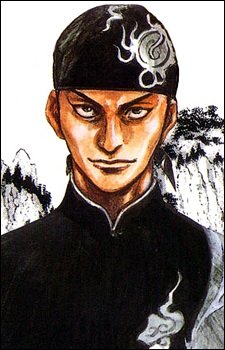Series & First Appearance
Ryou Narushima is the central figure in the manga Shamo, created by Hoshino Yukinobu. The series began serialization in 2002 and has gained a significant following. While Shamo has not been adapted into an anime, it is recognized for its intense exploration of juvenile delinquency and moral ambiguity.
Profile at a Glance
Ryou Narushima is a teenage character, typically depicted as being in his late teens. He serves as the protagonist of Shamo, though his actions often blur the lines between heroism and villainy. Throughout the series, Ryou is linked to karate, having mastered it during his time in juvenile prison as a means of self-defense. His signature fighting style is heavily influenced by Kyokushin karate, and his character is marked by an overarching theme of moral decay intertwined with potential redemption.
Personality & Motivations
Ryou Narushima is characterized by his intense complexity; he is often portrayed as brooding, aggressive, and deeply troubled. His unrepentant nature regarding the brutal murder of his parents defines much of his demeanor, and he willingly engages in further violent and morally repugnant crimes, including assault. Despite this, he occasionally demonstrates moments of care and compassion, particularly toward his sister, hinting at an inner struggle for redemption. A notable quirk is his receptiveness to violence as a means of solving problems, which he justifies through a twisted moral lens.
Abilities / Powers
Ryou possesses exceptional martial arts skills, particularly in karate, having undergone rigorous training in juvenile prison. He showcases impressive physical strength, speed, and fighting techniques, which make him a formidable opponent. While his combat prowess is one of his defining traits, Ryou’s psychological struggles significantly constrain him; his propensity for violence often undermines his potential for personal growth. Throughout Shamo, Ryou faces challenges that test the limits of his abilities and often lead him down darker paths.
Major Story Arcs & Growth
Ryou’s development is marked by several pivotal story arcs that explore his descent into darkness and occasional glimpses of hope. Initially, his journey begins with his violent outburst and subsequent incarceration—an event that shapes his identity. Throughout the manga, various encounters with characters, especially Naoto Sugawara, encourage Ryou to reflect on his violent tendencies and societal rejection. However, instead of achieving reform and redemption, Ryou continuously succumbs to his darker impulses, illustrating the stark reality of his situation and the limited opportunities for social reintegration. As the narrative progresses, Ryou’s choices increasingly lead him away from redemption, culminating in a tragic cycle of violence.
Notable Relationships
Key relationships in Ryou’s life include his estranged family, particularly his sister, whom he takes care of, demonstrating his fragmented sense of responsibility. His rivalry with Naoto Sugawara serves as a powerful foil; Sugawara embodies societal acceptance and success largely derived from similar violent tendencies. This relationship highlights the irony in societal perceptions of violence—while Narushima is condemned, Sugawara is celebrated. Additionally, supporting characters influence Ryou’s path, forcing him to confront his actions and their consequences.
Iconic Moments & Quotes
One of Ryou’s most memorable moments occurs during his confrontation with Sugawara, where he articulates the chilling realization of his moral disconnection: "To be a monster, one must first unlearn their humanity." This line captures Ryou’s internal conflict and resonated with fans, emphasizing his transformation over time. Another significant scene involves Ryou’s interactions with his sister, wherein he showcases vulnerability and remorse, briefly illuminating the potential for redemption that he often rejects. These moments are crucial in illustrating the duality of his character and the overarching themes of the narrative.
Trivia & Behind-the-Scenes
Shamo is noted for its gritty portrayal of juvenile crime and its critique of societal values. Ryou Narushima’s character draws inspiration from real-life incidents of youth violence, examined through the lens of martial arts culture and ethical dilemmas. His character is partially modeled after "Youth A," a notorious juvenile delinquent, and Ryu Narushima, a celebrated Kyokushin karate fighter, signifying the blend of reality and fiction that characterizes the series. Ryou Narushima has garnered popularity among manga readers, evidenced by his 415 member favorites, but remains a controversial figure due to his morally ambiguous actions and choices.
Ryou’s complexity as a Byronic hero, coupled with the broader societal themes embedded in his story, offers a challenging yet thought-provoking examination of violence, redemption, and the struggle for identity in a judgmental world.







